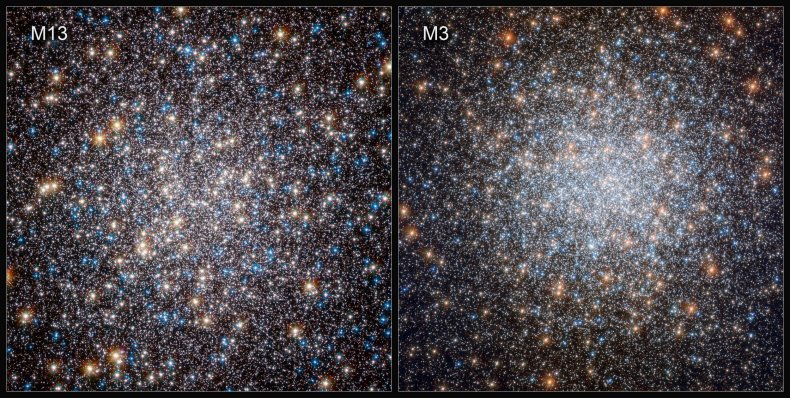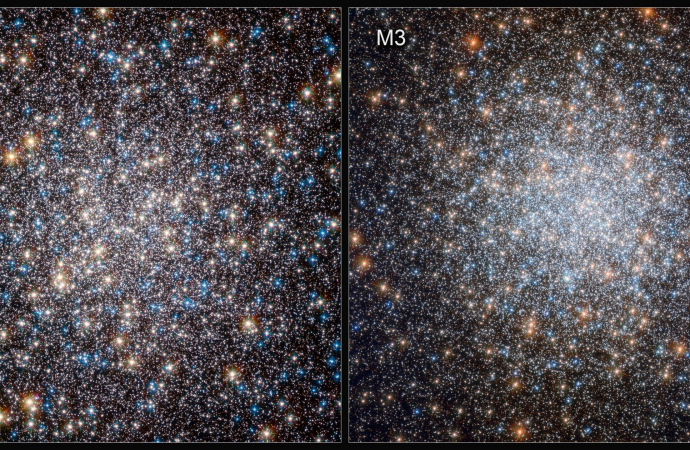Astronomers have discovered that dying white dwarf stars can burn nuclear fuel in their outer shells, prolonging their lives. The discovery made using the Hubble Space Telescope runs contrary to the current view of white dwarfs as just slowly cooling inert star cores.
Source: Newsweek
Stars become white dwarfs towards the end of their lives as they shed their outer layers of material. This leaves behind an extremely dense, cooling stellar core that doesn’t have the mass needed to trigger the nuclear fusion processes that create heavy elements.
Stars of smaller masses will end their lives as white dwarfs, which are the most common objects in the Universe, making up around 98 percent of known stellar objects.
Our own star, the Sun, will end its life as a white dwarf. This research implies that this end could be more protracted than previously believed.
Jianxing Chen, a PhD student in the Department of Physics and Astronomy at the Alma Mater Studiorum Università di Bologna and the Italian National Institute for Astrophysics, said in a press release on the new findings: “We have found the first observational evidence that white dwarfs can still undergo stable thermonuclear activity.
“This was quite a surprise, as it is at odds with what is commonly believed.”
The international team led by Chen found evidence that cooling white dwarfs in the massive collection of stars belonging to globular cluster Messier 13 (M13), in the Canes Venatici constellation, still burn hydrogen in their outer layers. This helps them stay hot and hold back the rate of aging.
Their research was published in the journal Nature Astronomy.
To reach their conclusion, Chen and her team investigated two globular clusters: Messier 3 (M3), located around 34 thousand light-years from Earth, and the more distant M13, found around 73 light-years away.
While the stars in the two clusters have many features in common, such as their age and their abundance of elements heavier than helium, astronomers have noted that the stars that will eventually become white dwarfs in M13 are bluer in color than those of M3.

This tells astronomers that this population of stars in M13 is hotter than those in M3 and, as age is related to temperature, it means that comparing both clusters is a great way to measure aging in white dwarfs.
The team used Hubble’s Wide Field Camera (WFC3) which can view the cosmos in a wide range of electromagnetic frequencies to view the clusters in near-ultraviolet light.
Comparing 700 white dwarfs across the two globular clusters, they found the cooling stellar cores that make up standard white dwarfs in M3. In M13, however, they found two distinct populations of white dwarfs, the expected standard white dwarfs and some that had managed to hang on to their hydrogen-burning layers.
This retained layer forms an outer envelope of burning hydrogen around the white dwarf, which allows it to cool more slowly. The team found that around 70 percent of the white dwarfs in M13, also known as the Hercules Cluster, were burning hydrogen in this way and would thus stay hotter for longer.
Chen and her team’s findings could change the way in which astronomers measure the ages of stars in the Milky Way as it complicates what had previously been seen as a fairly straightforward relationship between a star’s age and its temperature.
White dwarf cooling has been used as a natural clock to estimate the ages of globular clusters and open clusters, which are collections of stars younger than those in globular clusters. This discovery implies that previous estimates could be off by as much as a billion years.
Francesco Ferraro a professor in the Department of Physics and Astronomy at the Alma Mater Studiorum Università di Bologna and the Italian National Institute for Astrophysics, said in a press release: “Our discovery challenges the definition of white dwarfs as we consider a new perspective on the way in which stars get old.
“We are now investigating other clusters similar to M13 to further constrain the conditions which drive stars to maintain the thin hydrogen envelope which allows them to age slowly.”

Source: Newsweek

































Leave a Comment
You must be logged in to post a comment.